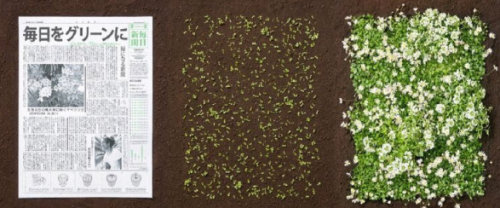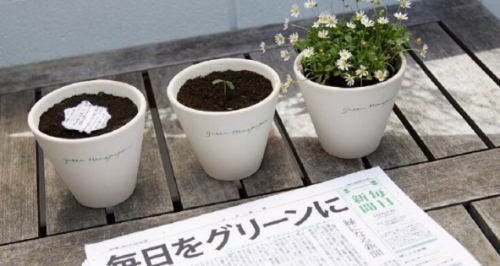Be Sad But Get Up. You Don’t Have To Shower. You Can Put On The Same Clothes You Wore Yesterday. Nobody
Be sad but get up. You don’t have to shower. You can put on the same clothes you wore yesterday. Nobody will care. The sky is blue, wildflowers are blooming by the side of the road. Strangers have stories to tell. Go for a walk, go for a drive, go to a greenhouse, a bookstore, a movie theater. You can stay in bed but nothing is going to happen there. Sometimes you’ve really just got to get the fuck up.
More Posts from Earthquakedeer and Others
Reblog if English isn't your native language


Days of the week with time grammar! A way I was taught to remember them is with the mnemonic “nine green kangaroos stole my kid’s dog.” If you have any questions, feel free to ask

Guide to Self-Studying Japanese
A large proportion of Japanese learners self-study. Finding places to learn Japanese in a classroom environment can be difficult and expensive. Here’s a guide on how you can learn Japanese for free and from the comfort of your sofa.

When learning Japanese, the most important step is to learn Hiragana and Katakana, the writing alphabets of Japanese.
The best way I’ve found to do that is to make flashcards. Make sure you practice writing as well as recognizing them, this will not only be a great skill to have but will also reinforce the shapes in your mind.
Resources:
[Hiragana 42], the best guide I’ve found to learn the Hiragana (in a day!) [Hiranana and Katakana Quiz Site] [Kana Invaders Game] [Anki] An amazing program that will make sure you never forget any Kana….

The next step is to start learning vocabulary. Where can you find what to learn? Use a site like Memrise to find word lists (for example, there is a word list for all the vocabulary in starter textbooks like Genki), and use the amazing interface to learn them and keep them in your long term memory.
Resources:
[Memrise] as mentioned above to find and learn vocabulary lists. [Most Common Words List] [Anki] An amazing program that will make sure you never forget any Vocabulary….

While encountering vocabulary, you’re likely to be coming across super-complicated-looking Kanji. You can learn Kanji through Memrise as above, but there are some other websites that may be of interest.
Resources:
[Kanji Damage] A great site where you can learn Kanji through mnemonics. [WaniKani] by the same people who make TextFugu can help you learn Kanji from scratch. [Anki] An amazing program that will make sure you never forget any Kanji….

The next step is to apply that new vocabulary to grammar points and start making sentences.
If you can’t get your hands on textbooks like Genki, don’t fear! There are a lot of great online grammar resources.
Resources:
[TextFugu] a highly rated ‘online textbook’ which will guide you right from the beginning of learning Japanese. [Guide to Japanese] another online textbook with a lot of grammar points and excellent explanations.

So you probably started to learn Japanese because you have some interest in Japanese media. Time to start using it to your advantage!
Aside from the obvious watching Anime, J-dramas and films, why not try Reading Japanese News? Watching Japanese TV? Just make sure you are making these activities productive - note down new vocabulary, add them to Anki, and keep learning! It’s much easier to learn things you’re interested in.

The most important but difficult part of self-studying Japanese is getting your own compositions checked. Utilize all that grammar and vocabulary and write a short piece, it could be a diary entry or a short essay. Get it recorded for you by a native on RhinoSpike, and checked for grammar and consistencies on Lang-8.These sites also give you the chance to connect with Japanese natives, and perhaps start up some language exchanges!
For more resources, take a look at my Ultimate Resources List
Any more tips? Please submit them here!




when you really do care about mother nature

days of the month!The top with the number is how they are normally written out. The hiragana and kanji are how to say them. If you need any help let me know!

“I figure the universe is basically like a machine. I don’t know who made it but it chugs along the way its suppose to most of the time. Sure little pieces break and stuff goes haywire once in a while, but, mostly things happen for a reason.”

I’ve been preparing for the JLPT N5 myself, so I thought I’d make a little list of some of the resources I’ve found!
websites
Nihongo Ichiban N5 Study Material
JLPT Website:
Self Evaluation List
Sample Questions
japanesetest4you JLPT N5 Resources
JLPT Boot Camp
Mock Test
JLPT Study Page (a bit of an older page, but still a good study resource)
Memrise
JLPT N5 Vocab
JLPT N5 Readings
books
Official JLPT Reference Books
Guide to Reading and Writing Japanese Characters (4th Edition)
Compact Japanese Dictionary
Read Japanese Kanji Today
apps (android)
Kanji Study
Obenkyo
Duolingo
Write Japanese: Kanji, Hiragana, and Katakana
Tinycards by Duolingo: Fun & Free Flashcards
伊達メガネ
伊達メガネ (だてめがね) - glasses that are just a fashion accessory, not something one needs because of bad eyesight
The first word, 伊達, means “elegance, having style, doing something just for show” and メガネ is, of course, “glasses”.

「声かけてもらえると助かる」”I’d appreciate it if you could call me.”
〜てもらえると助かる (~てもらえるとたすかる) “I’d appreciate it if you could ~/it’d be helpful if you could ~”
This grammar point is a really polite way to ask someone to do something for you.
The 〜てもらえる part is from the potential form of one of the grammar points for receiving favors 〜てもらう So basically もらう (to receive) –> もらえる (to be able to receive) 〜てくれる can be used too but 〜てもらう has a more thankful feel to it and the verb 助かる means “to be saved” or “to be helped”
Ex: 明日、空港に迎えに来てもらえると助かります。 あした、くうこうにむかえにきてもらえるとたすかります。 I’d appreciate it if you could pick me up tomorrow from the airport.
-
 jumping-down reblogged this · 1 month ago
jumping-down reblogged this · 1 month ago -
 prettyboyarts liked this · 2 months ago
prettyboyarts liked this · 2 months ago -
 geekyglamour413 reblogged this · 2 months ago
geekyglamour413 reblogged this · 2 months ago -
 aratinatophat reblogged this · 2 months ago
aratinatophat reblogged this · 2 months ago -
 aratinatophat liked this · 2 months ago
aratinatophat liked this · 2 months ago -
 fagyaoi reblogged this · 2 months ago
fagyaoi reblogged this · 2 months ago -
 fagyaoi liked this · 2 months ago
fagyaoi liked this · 2 months ago -
 sleepy-strawberry reblogged this · 2 months ago
sleepy-strawberry reblogged this · 2 months ago -
 secretaryofpuppetry reblogged this · 2 months ago
secretaryofpuppetry reblogged this · 2 months ago -
 sleepy-strawberry liked this · 2 months ago
sleepy-strawberry liked this · 2 months ago -
 doonamei liked this · 2 months ago
doonamei liked this · 2 months ago -
 hopeful-engineer reblogged this · 2 months ago
hopeful-engineer reblogged this · 2 months ago -
 shisasan liked this · 2 months ago
shisasan liked this · 2 months ago -
 pink-soul-diary liked this · 3 months ago
pink-soul-diary liked this · 3 months ago -
 catcake24 liked this · 4 months ago
catcake24 liked this · 4 months ago -
 thatninjacat27 reblogged this · 4 months ago
thatninjacat27 reblogged this · 4 months ago -
 thatninjacat27 liked this · 4 months ago
thatninjacat27 liked this · 4 months ago -
 yourmomcallsmedelulu reblogged this · 4 months ago
yourmomcallsmedelulu reblogged this · 4 months ago -
 yourmomcallsmedelulu liked this · 4 months ago
yourmomcallsmedelulu liked this · 4 months ago -
 valengory1234 liked this · 4 months ago
valengory1234 liked this · 4 months ago -
 littlevnavy liked this · 4 months ago
littlevnavy liked this · 4 months ago -
 littlevnavy reblogged this · 4 months ago
littlevnavy reblogged this · 4 months ago -
 cyberglyphs reblogged this · 4 months ago
cyberglyphs reblogged this · 4 months ago -
 cyberglyphs liked this · 4 months ago
cyberglyphs liked this · 4 months ago -
 merridelicious liked this · 4 months ago
merridelicious liked this · 4 months ago -
 takethecrunchywiththesmooth reblogged this · 5 months ago
takethecrunchywiththesmooth reblogged this · 5 months ago -
 contremineur liked this · 5 months ago
contremineur liked this · 5 months ago -
 b8rack reblogged this · 5 months ago
b8rack reblogged this · 5 months ago -
 big-low-t liked this · 5 months ago
big-low-t liked this · 5 months ago -
 rustbeltjessie reblogged this · 5 months ago
rustbeltjessie reblogged this · 5 months ago -
 rustbeltjessie liked this · 5 months ago
rustbeltjessie liked this · 5 months ago -
 pocaas liked this · 5 months ago
pocaas liked this · 5 months ago -
 chinaofrps reblogged this · 5 months ago
chinaofrps reblogged this · 5 months ago -
 farida-mourad reblogged this · 6 months ago
farida-mourad reblogged this · 6 months ago -
 flowerytallee liked this · 6 months ago
flowerytallee liked this · 6 months ago -
 thefunke liked this · 6 months ago
thefunke liked this · 6 months ago -
 esscapismm liked this · 6 months ago
esscapismm liked this · 6 months ago -
 gxldbvby reblogged this · 6 months ago
gxldbvby reblogged this · 6 months ago -
 gxldbvby liked this · 6 months ago
gxldbvby liked this · 6 months ago -
 muhtesemz reblogged this · 6 months ago
muhtesemz reblogged this · 6 months ago -
 theoldbecomesnew reblogged this · 6 months ago
theoldbecomesnew reblogged this · 6 months ago -
 de-la-r0sa reblogged this · 7 months ago
de-la-r0sa reblogged this · 7 months ago -
 healercharm liked this · 7 months ago
healercharm liked this · 7 months ago -
 stonedrozes liked this · 7 months ago
stonedrozes liked this · 7 months ago -
 tahajud reblogged this · 7 months ago
tahajud reblogged this · 7 months ago
Just a person learning Japanese. Self-learner. If you're also studying Japanese and want to practice with someone (and you're also very much a beginner) then message me! はじめまして! さびーなです。よとしく!
196 posts


